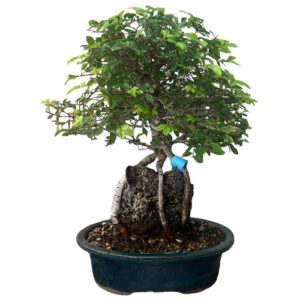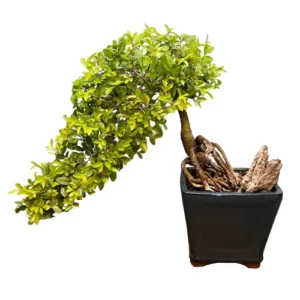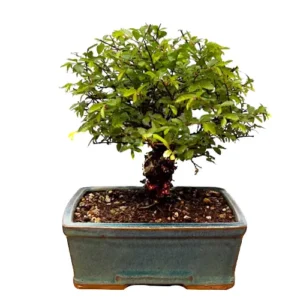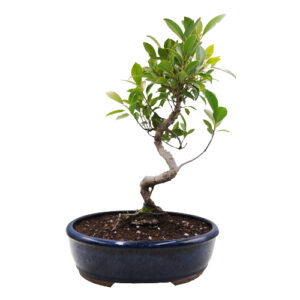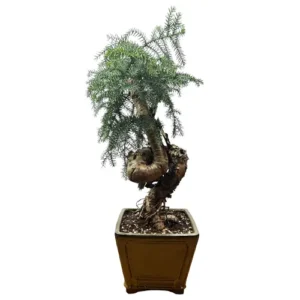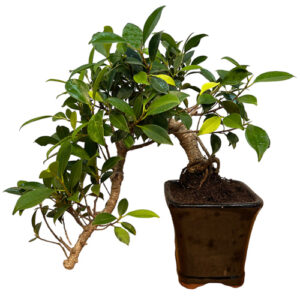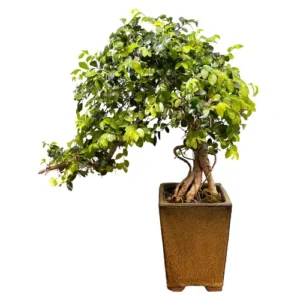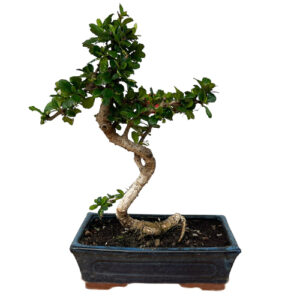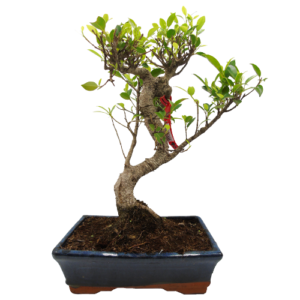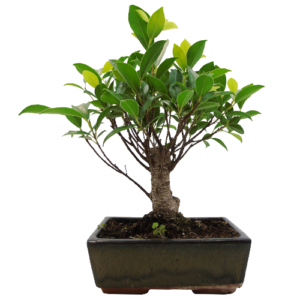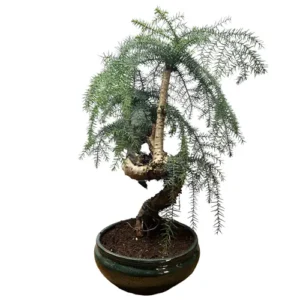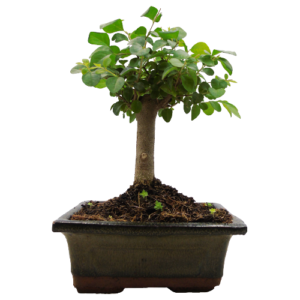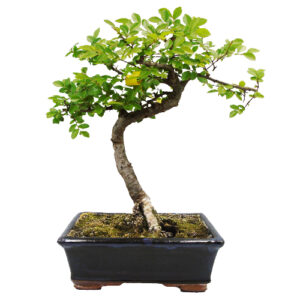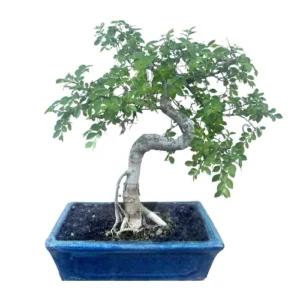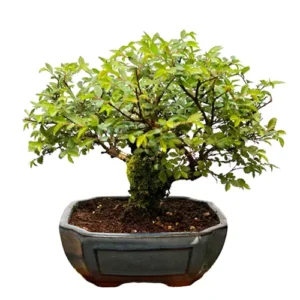Pithecellobium tortum
Brazilian Rain Tree Bonsai
Native to the rainforests of Brazil. Its deep green bark on a wide characterful trunk sits underneath reaching compound leaves. Far from easy to maintain, this legume makes for a versatile and arresting bonsai.
Brazilian Rain Tree Bonsai Care Tips
Placement
As a Brazilian native species, this is a demanding plant to care for in temperate climates. As an indoor bonsai, Brazilian Rain Trees require high light and humidity levels and need to be kept at a minimum temperature of 10 degrees C.
Watering
Keep your Brazilian Rain Tree moist all year-round. Careful not to keep the soil too moist as this can bring on root rot. Spraying your tree with a mister is a good way to provide extra humidity.
Feeding & Fertilising
Every week during the growing season, feed your Brazilian Rain Tree with a liquid fertiliser. Come the winter feed once a month.
Pruning & Wiring
Pruning your bonsai is important not only to create or maintain an aesthetic style but to also ensure optimal health. Pruning can be done with scissors regularly. Do not use a concave cutter to avoid die-back. trim shoots frequently. Brazilian Rain Tree should be left with a small stub after pruning to stave off die-back.
This specimen is suitable for wiring but be careful of the thorns when doing so. We recommend using wires with a thickness that matches the thickness of the branch: if the wire you choose is too thick you will damage the bark. If it is too thin, it won’t be effective.
Repotting
Repotting your tree is an important way to provide a fresh and suitable soil mix and ensure appropriate root health. Brazilian Rain Tree can be repotted every other year in spring with moderate pruning. A compost mix with sand or sandy loam is advised.
Trees that are ready for repotting will require root pruning, a suitable new pot and appropriate soil mix.
When repotting, do not cut back the root mass by a large amount, and choose a well-draining soil mix that has a neutral or slightly higher PH value of 5-6 but not over 7. We tend to use a mixture of different speciality bonsai soils on our trees. Every species is different so please contact us for free soil-mix advice or to take advantage of our repotting service.
Bonsai make for a one-of-a-kind indoor plant offering elegance, nature and art all in one minute form. Across an array of exquisite and erudite species, they all demand their own specific care and cultivation needs in order for their beauty to flourish. We have an extensive library of care guides for indoor bonsai trees so you can make an informed and considered choice. It’s not about selecting the perfect bonsai, it’s about selecting the perfect bonsai for you.
Brazilian Rain Tree Bonsai - Typical Queries
How to propagate Brazilian Rain Tree bonsai?
Brazilian Rain Tree can be propagated with seeds, cuttings and through air layering. Air layering has proven a popular method. Start by cutting a small bark strip fro a healthy branch. The cut site needs wrapping with a small plastic bag filled with a moist soil mix. Maintain moisture and from 2 to 3 months roots will begin to germinate. Once the cutting has enough roots to self-sustain it can be potted in a container with an appropriate soil mix of sphagnum and peat.
Do Brazilian Rain Tree bonsai get pests and diseases?
The Brazilian Rain Tree is a reasonably resistant plant to most pests and diseases. It can suffer from nematodes that will need nematicide to protect root health. When cultivated as an indoor plant it can be susceptible to spider mites, aphids and white fly. These will need addressing with specific pesticides.
Is Brazilian Rain Tree a good beginner bonsai?
Brazilian Rain Tree is likely not the best choice for the beginner. When cultivated in cooler climates, this will take considerable care and attention to its environmental details. As an indoor bonsai, this is not the easiest to keep and train.

